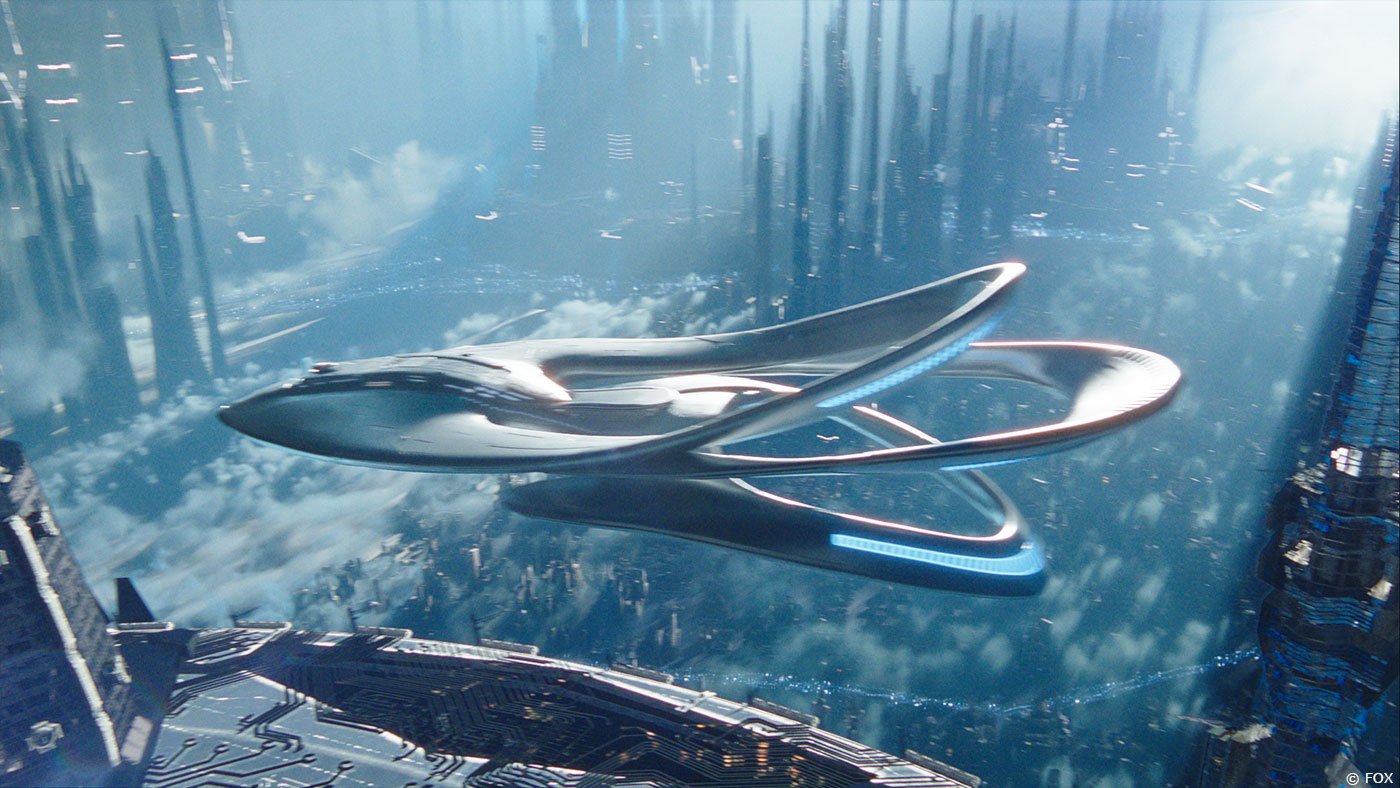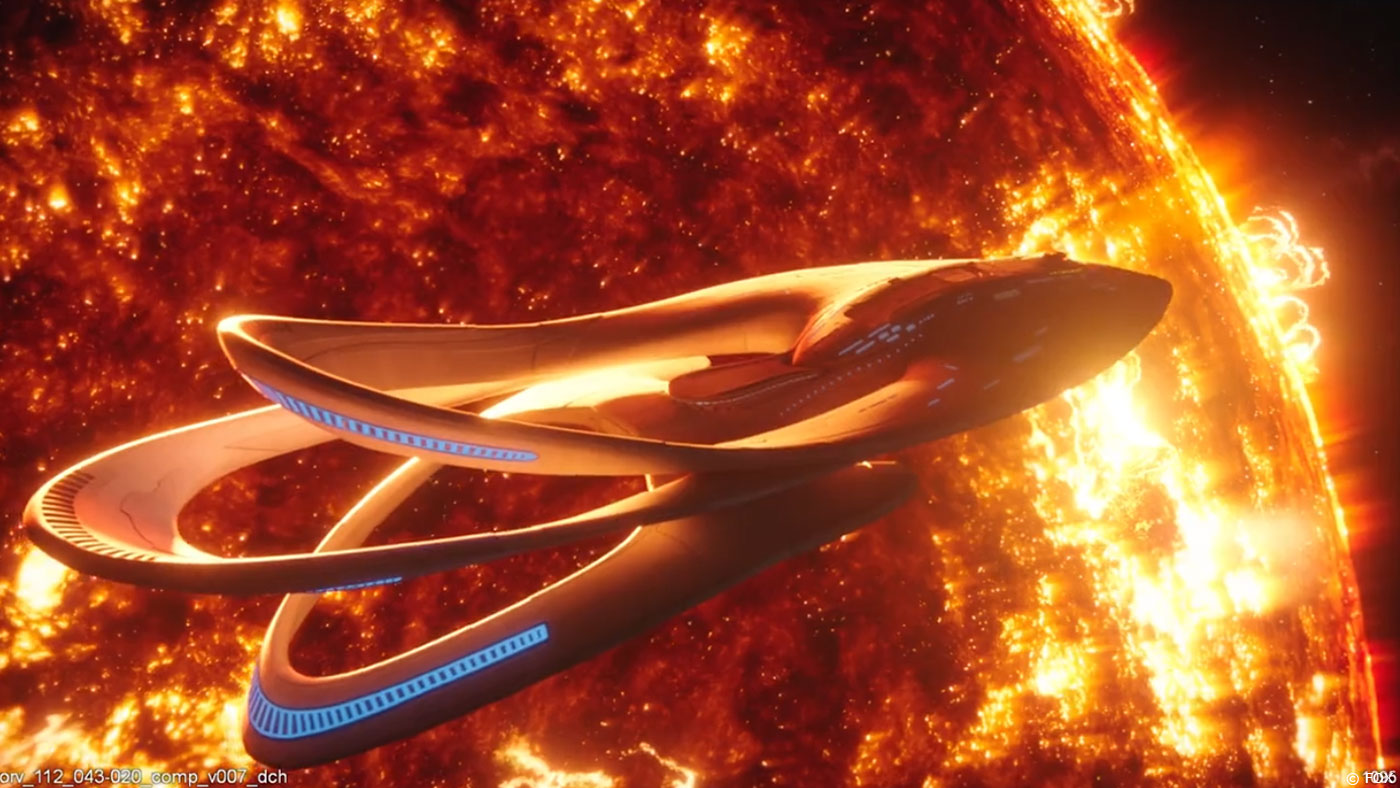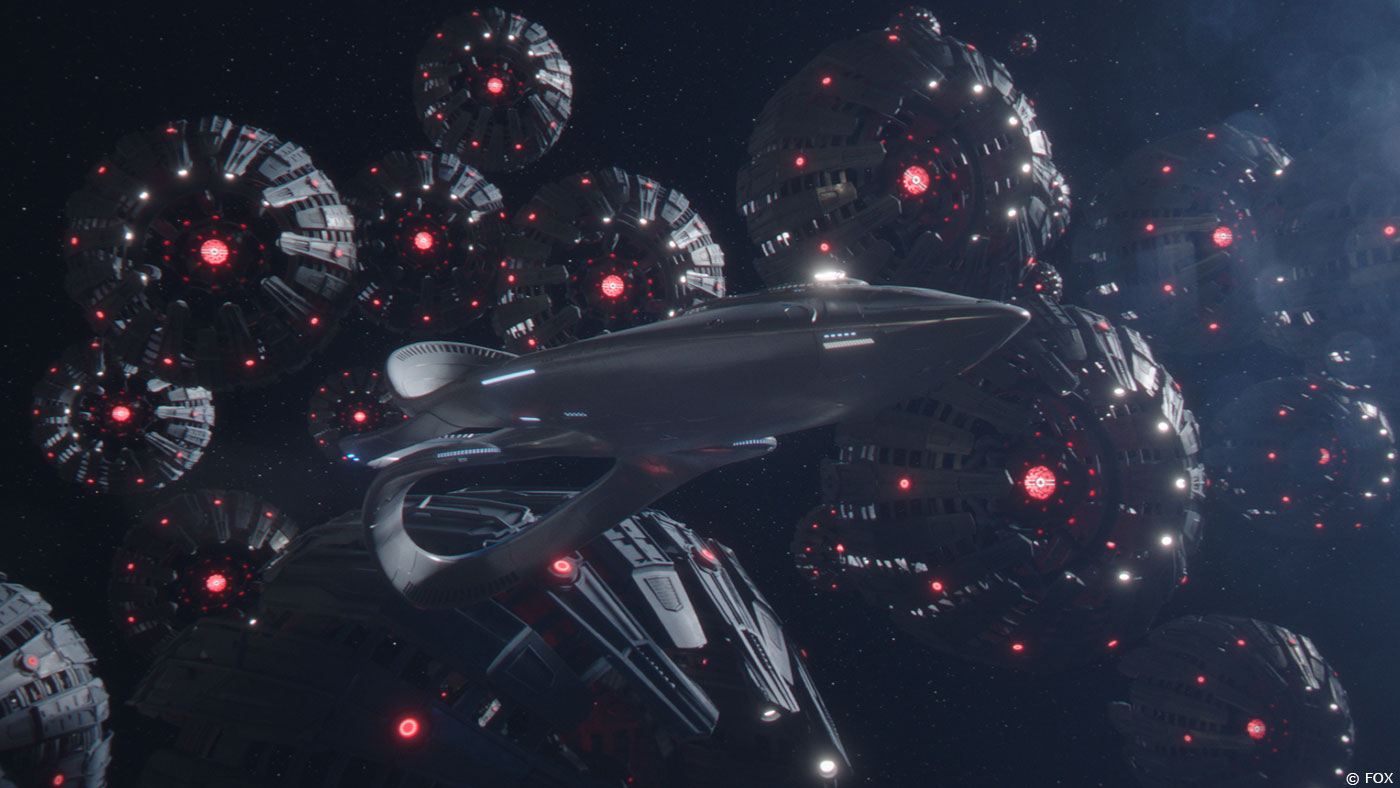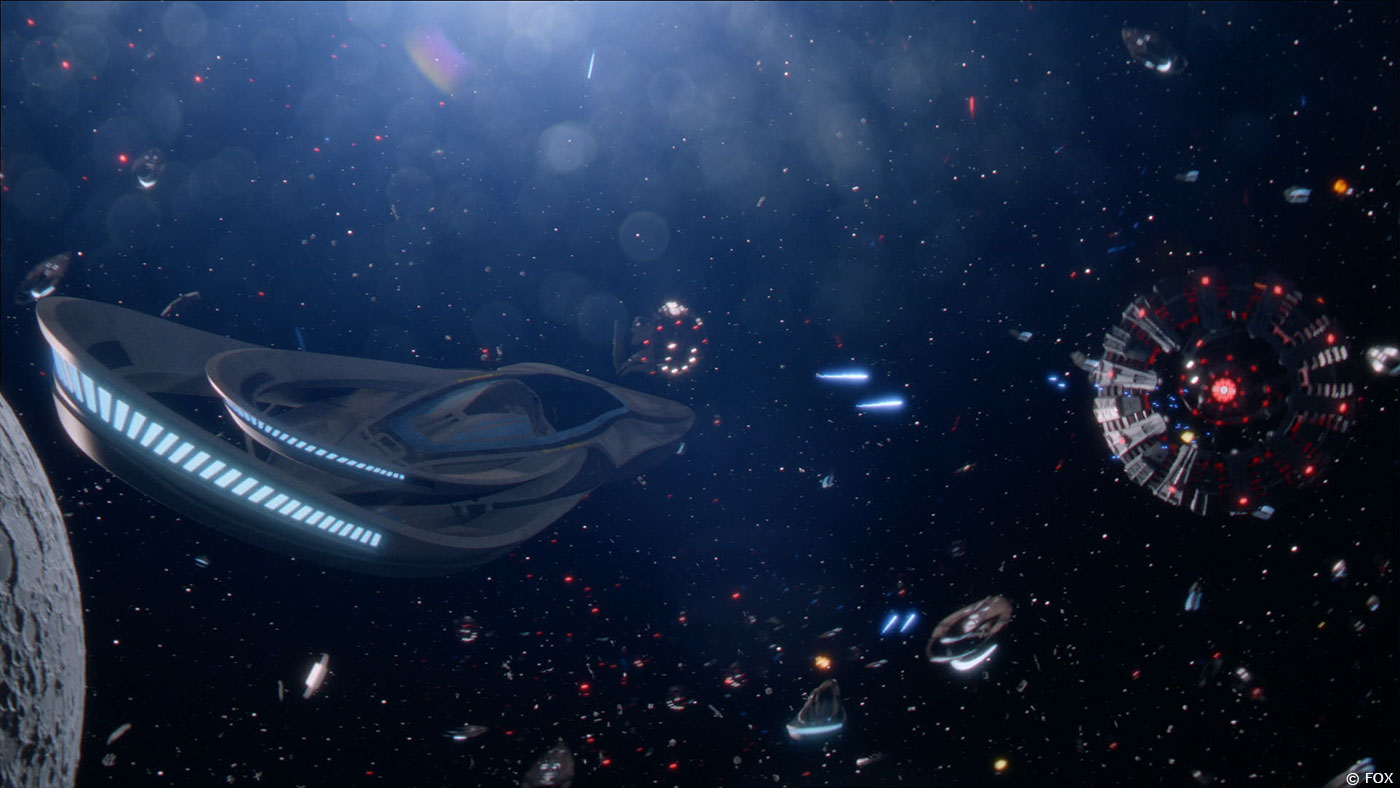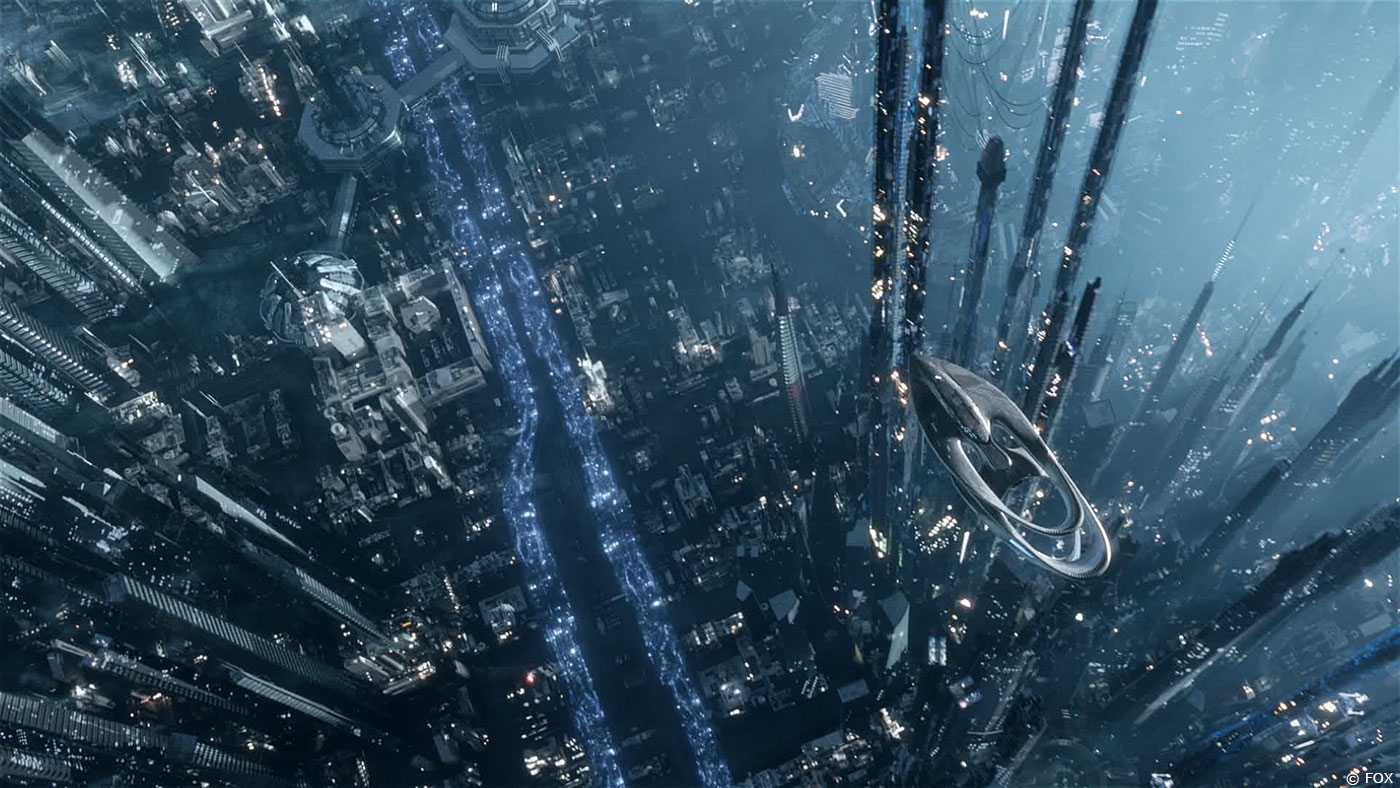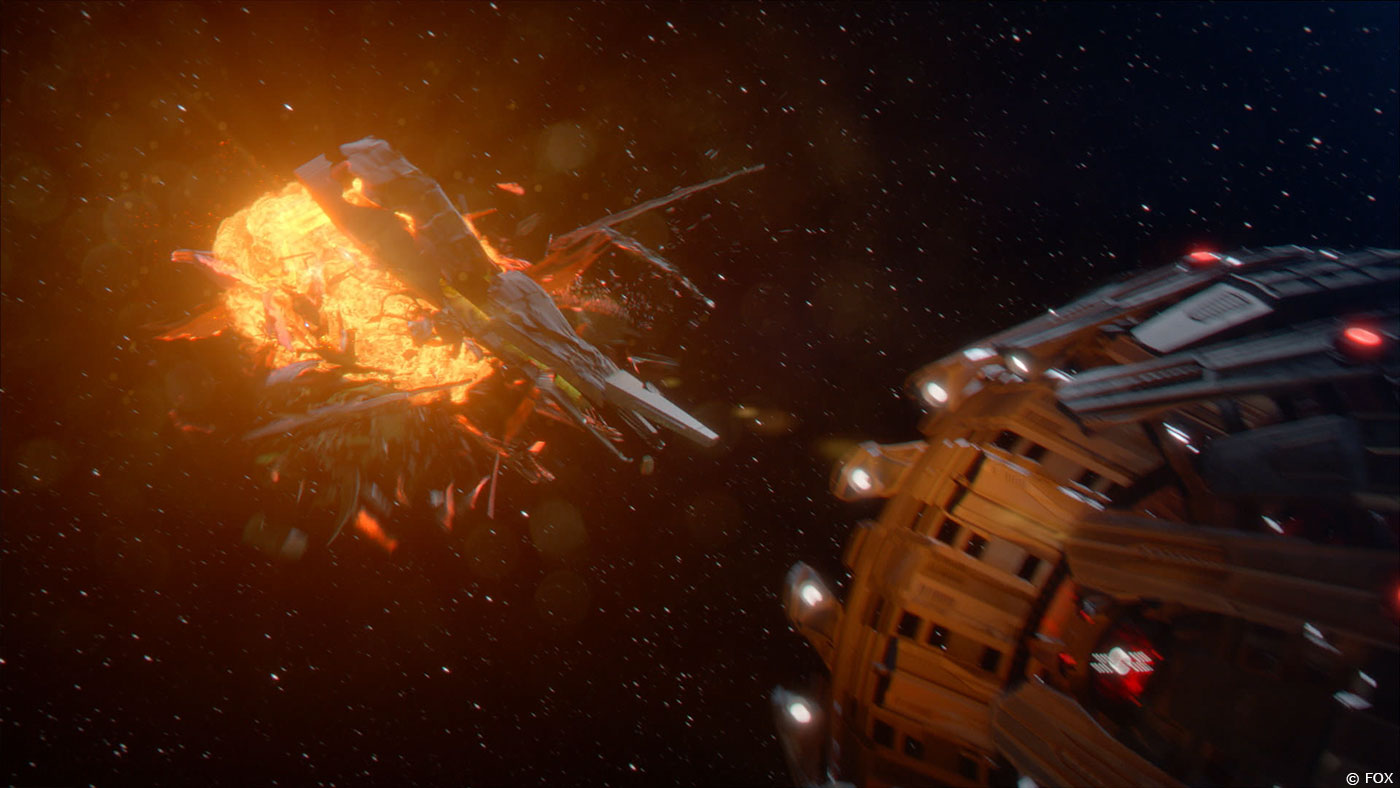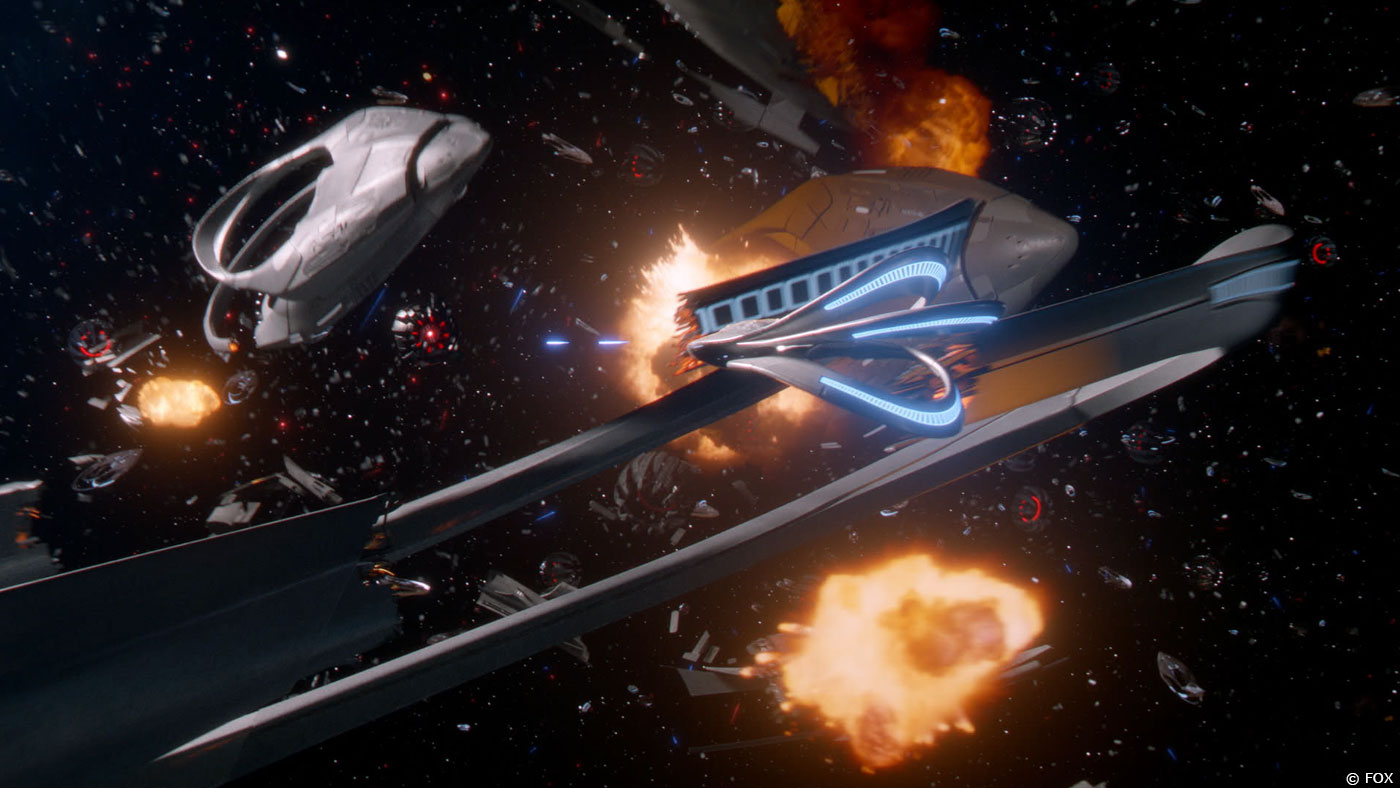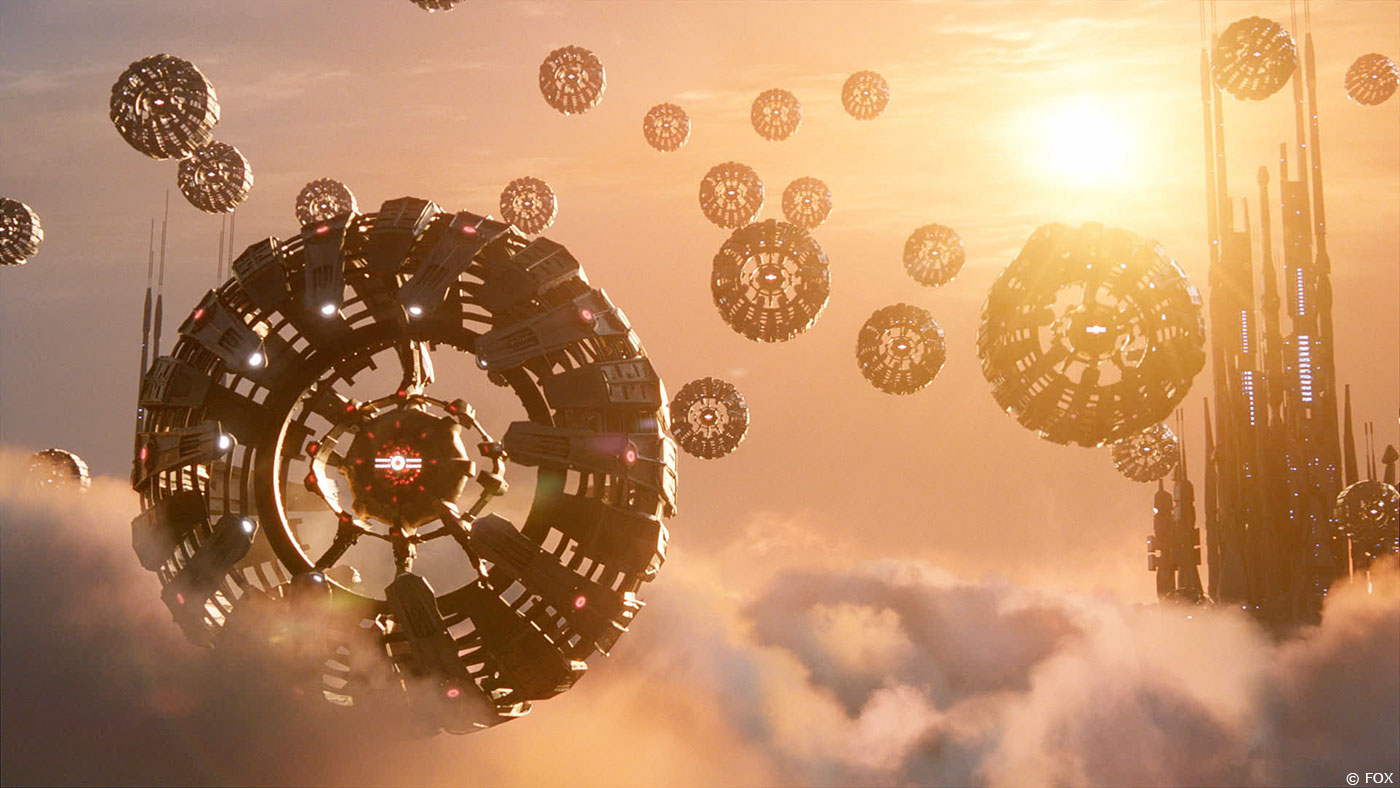The team of Pixomondo (composed of Nhat Phong Tran (VFX Supervisor), Daniel Carbo (VFX Producer) and Matt McClurg (Previz Supervisor)) take us into deep space about their work on the second season of THE ORVILLE:
What is your background?
Nhat Phong Tran: My background is in traditional filmmaking. Later on, I studied programming and visual effects. I started working in a digital intermediate and post-facility in Europe. My transition to visual effects happened naturally as a combination of the arts I learned during film school and the technical skills I acquired as a visual effects artist.
Dan Carbo: I have 16 years of VFX Production experience.
Matt Clurg: I’ve been in previsualization for 9 years, and have been a previs supervisor for the last five.
How did you and Pixomondo get involved on The Orville?
Carbo: PXO was awarded work on Season Two based on some sequences that we did on Season One. PXO brought me in to produce THE ORVILLE right after I finished working as VFX Producer on SOLO: A STAR WARS STORY.
Tran: We were brought back for Season Two with more work and more responsibility. That’s when I was brought on as VFX Supervisor.
McClurg: We were awarded all of the Season Two previs work after an early test shot we put together based off a single sentence from the script. There was no context or reference given for the scene, which made its development particularly challenging.
How was the collaboration with Show Creator Seth MacFarlane and VFX Supervisor Luke McDonald?
Tran: I personally never worked with Seth directly, but Luke is pretty in tune with Seth in the way he interprets Seth’s notes, and gives us direction as to how to hit Seth’s notes. Luke himself is a great communicator and a team player. What I appreciate about him is that he comes from an artist’s background, and knows both the production and the visual effects sides very well. This is something I don’t take for granted.
Carbo: Luke has such a great background, and really understands the look and feel of the show. Working with him allows for a high level of confidence that the creative decisions being made are going to stick because of his rapport with Seth. Luke is very production friendly, and understands the challenges of working on a show with such a high visual bar, but also a very compressed timeline.
McClurg: Luke was a constant professional and his extensive VFX background laid the groundwork for an extremely efficient previs process. We were fortunate to have gained his trust rather early on, and he would graciously allow the team to interpret certain beats without his immediate oversight. Our additional collaboration with CG Lead Brandon Fayette was instrumental to our success during the latter part of the season. Seth is one of the most abundantly productive individuals I’ve ever known, so we tried to make the most of his time when we were lucky enough to get it! Every note we received from him had real thought and purpose behind it, and his energy and passion for the work was beyond compare.
What was their expectations and approach about the visual effects?
Tran: Working on Season Two of THE ORVILLE, my team and I definitely felt like we were creating art. In this regard, the expectations were driven by the question of: ‘How can we achieve a real, but beautifully composed image of abstract, never-before-seen worlds to support the narrative and story?’ In other words I think there was a wonderful balance between creative and scientific challenges. It is a pleasure to be challenged in these ways as a visual effects artist.
How did you organize the work with your VFX Producer?
Carbo: The vast majority of PXO’s work is being done in Los Angeles, which is an overall shift we are seeing with the California tax rebates and the massive amount of episodic work that is now going into production in this state. PXO’s LA office is growing rapidly because of this and THE ORVILLE has been a great opportunity fully utilize and grow our LA team. Of course, we relied on assistance from PXO’s global team of eight branches, which allows us to increase capacity as needed, and provides an additional layer of flexibility for our clients.
How did you split the work amongst you?
Carbo: One of the challenges with THE ORVILLE is that you’re constantly creating new worlds and creatures, and there is a lot of context shifting for our key leads. As we’re building full CG cityscapes, we are also detailing out a creature, or animating a space battle. PXO has a strong team of 3D Max artists, as well as a Maya based pipeline, so our flexibility in using the two packages was a major advantage as we’d breakdown upcoming work, and determine what packages would allow for the best results.
What are the sequences made by Pixomondo?
Carbo: First, PXO provided all of the previs for the entire season, so every major VFX sequence started with the PXO previs team. Then, PXO took 1,065 shots to final. Some of the season highlights include:
- Alara’s home world
- The episode Primal Urges where we did a head replacement for the character Unk, created the star/sun asset, and the planetary destruction
- In All the World is Birthday Cake we produced large digital crowds and city scape
- The Kaylon home world
- Roughly the first 3rd of the large battle sequence in “Identity” Part 2
How did you use the Pixomondo experience on Star Trek Discovery for this show?
Carbo: STAR TREK DISCOVERY provided a solid foundation from a technical standpoint. However, we had a separate team and facility working on THE ORVILLE, and the demands of the show are a bit different, so they are very much 2 different productions.
Can you explain in detail about the previs process?
McClurg: While extremely challenging, the previsualization process for THE ORVILLE was a uniquely rewarding one as well. Our work was treated as the final shots in edit by the production, so there was a tremendous amount of development required to get the exact look and feel for each sequence. The action, lighting, composition, timing, color, and art direction of each shot was meticulously directed by Seth and his team, and allowed for us to develop a look rarely seen in the previs phase. The production was so invested in our process, it provided a 1:1 blueprint for the finals team and brought Seth’s creative vision to life in an extremely fun and remarkable way.
What was your freedom to purpose shots and framing?
McClurg: Amazingly, there were only 2-3 sequences boarded before we began previs for Season Two, allowing us quite a bit of freedom in the initial phases. The first few episodes we’re, naturally, a little rough. But as we progressed through the season, we grew a firm understanding of the sensibilities and energy that production was looking for. The notes were rather sparse by the final episode.
Did you develop tools to use the previs anim and models for your final shots?
McClurg: There were a number of FX-based assets we specifically developed in 3D to help minimize the compositing time required to emulate the finals effects present in the show. The lighting and distortion used when ships come in/out of quantum was a fun build, and we implemented it several times per episode.
Can you explain in detail about the design and the creation of the USS Orville?
Carbo: The USS Orville was conceived and approved by Luke and Brandon Fayette, and handed off to vendors to implement into their pipelines.
Can you explain in detail about the creation of the huge city?
McClurg: For the Previs, we were given only nominal reference for the look of the Kaylon city. We knew production wanted the tops of the structures to protrude the clouds as the Orville descended. We knew that the structures themselves had to be reflective and give the impression they were built on-top of an existing city. And we knew that everything had to be fairly monolithic. Beyond that, we were given a creative green-light to design the city and, thankfully, most of that design was retained in the final development of Kaylon.
Tran: The creation of the city started with the script. When we read the script we started to understand hidden key facts about the Kaylon City which has a whole underlying secret story. We wanted to make the city itself tell that story in subtle ways. Basically the Kaylon City used to be a regular city with Kaylon and mankind co-existing. At some point, the Kaylon took over and exterminated civilization. This made us think about the possibility of actually having two cities, one that is the original city built by man, and on top of it would be a newly built city with all those megastructures perfectly engineered by the Kaylon.
When you watch our shots you will see that at the very bottom of the city are buildings that look more like buildings we are used to in our current real world: concrete and brick as primary building material. The Kaylon buildings are all metal alloys with very slick designs.
Did you use procedural tools for the city?
Tran: The whole city was art directed with hand-drawn maps which are basically driving attributes to procedurally populate the city with various types of buildings. It would’ve been impossible to place each building by hand. Everything was loaded at render time.
With an environment of this scale, how did you handle the lighting challenge?
Tran: It was important that we went off a good lighting concept. We wanted the color palette of that environment to be mostly cool, as everything is artificial and lacking in emotion. That is why we chose blue/cyan as the primary color.
What was your approach about the epic space battle?
Tran: Once animation was properly propagated into our lighting and FX departments, we started setting up light rigs and FX procedural setups right away to cover the majority of the smaller scale battle elements. For the hero ships and explosions we were polishing the lighting with textured specs, and gave all FX explosions plenty of secondary FX such as smaller scale debris and shrapnel.
Can you explain in detail about the creation of these shots?
Tran: The key for us was to build a pre-cached library of explosions, debris, background battle vignettes. Then they can all be used to rapidly populate the scene with a certain amount of base complexity. The good thing about this approach is that things also remain highly consistent, which can get challenging during crunch time.
Which sequence or shot was the most challenging?
Tran: We had a couple long shots of Union and Kaylon ships getting blown up while everybody else is shooting at each other. Those shots were creatively challenging because we wanted to convey scale and preserve the flow of the action, without distracting too much from important beats. With so much going on it can easily become a chaotic mess. But we saw it more like playing music – each shot had to have a rhythm and melody.
Carbo: Identity Parts 1 and 2 were both in production at the same time. The central chamber with the control panel on the Kaylon home world was a large percentage of the shots. We had Kaylon digi doubles all over the place, an interactive wall setup, and an exterior environment extension. While the space battle was a lot of really hard shots, the central chamber was a volume game with a lot of practical photography. Getting all of the plate material match moved and roto’d and prepped for comp, while generating our nuke setups and elements that had to be dropped into a lot of shots really kept production on its toes due to the amount of moving parts.
Is there something specific that gives you some really short nights?
Tran: Coffee, which I don’t drink.
Carbo: My kids!
McClurg: I’m going to also go with the kids!
What is your favorite shot or sequence?
Tran: I enjoy watching the Kaylon City approach shots as I like the art direction of everything you see – be it obvious structures and landmarks, to more subtle details like color accents and lighting. It creates an underlining the mood and foreshadows what’s about to come. Once you know the story and watch it over again, it’s even more fun to notice.
Carbo: I love the episode Primal Urges and the variety of work we provided for that episode. I think it’s one of the strongest of the season from story to visuals.
McClurg: The Kaylon approach really stands out because of how much art direction went into it. I also have a soft spot for some of the generic establishing and station-keeping shots that really showcase the design of the ships.
What is your best memory on this show?
Carbo: Nhat and I formed a fantastic partnership throughout this process. As a VFX Supervisor, Nhat is one of the most talented, knowledgeable and positive individuals I have ever worked with.
McClurg: We were given the opportunity to work in New York while Seth was filming another project. It was a tedious, rapid-pace, sleep-depriving two weeks – and I wouldn’t have changed it for anything!
How long have you worked on this show?
Tran: Roughly 9 months
Carbo: 11 months
McClurg: Just over one year.
What’s the VFX shots count?
Carbo: 1,065 shot finals and an innumerable amount of previs!
What was the size of your team?
Carbo: It ebbed and flowed with the demands of production and turnover schedule. I’d say we averaged around 50 artists when in full production.
McClurg: The previs team consisted of a Supervisor plus four artists – with some expansion to accommodate each episode’s layout phase.
What are the four movies that gave you passion for cinema?
Tran: TERMINATOR 2: JUDGEMENT DAY, A CLOCKWORK ORANGE, APOCALYPSE NOW, THE SEVENTH SEAL.
Carbo: I’ve always had a passion for documentary, which started with HOOP DREAMS. I love the story arc of BRAVEHEART. The visuals and skill level of 2001: A SPACE ODYSSEY will never be forgotten. And BACK TO THE FUTURE will forever define my childhood.
McClurg: LORD OF THE RINGS: THE FELLOWSHIP OF THE RING, EDWARD SCISSORHANDS, RAIDERS OF THE LOST ARK, BACK TO THE FUTURE.
A big thanks for your time.
THE ORVILLE Season 2 – Previz Reel – Pixomondo
THE ORVILLE Episode 8 – Showreel – Pixomondo
WANT TO KNOW MORE?
Pixomondo: Dedicated page about THE ORVILLE on Pixomondo website.
© Vincent Frei – The Art of VFX – 2019


